Tick Bite Red and Swollen: Recognizing Lyme Disease Symptoms and Treatment Options
What are the signs of a tick bite. How to identify Lyme disease symptoms. When should you seek medical attention for a tick bite. What are the treatment options for Lyme disease. How can you prevent tick bites and reduce the risk of Lyme disease.
Understanding Tick Bites: Identification and Initial Symptoms
Tick bites are often overlooked due to their painless nature and small size. These arachnids attach themselves to warm, moist areas of the body and can remain there for several days. Unlike other insect bites, tick bites don’t typically cause immediate discomfort or itching.
How can you identify a tick bite? Initially, it may appear as a small, dark speck on the skin. As the tick feeds, it swells, making it more noticeable. Common bite locations include:
- Scalp
- Behind the ears
- Armpits
- Groin area
- Between fingers and toes
Are tick bites always dangerous? Not necessarily. While ticks can transmit various diseases, not all bites lead to illness. However, it’s crucial to monitor the bite site and be aware of potential symptoms that may develop.
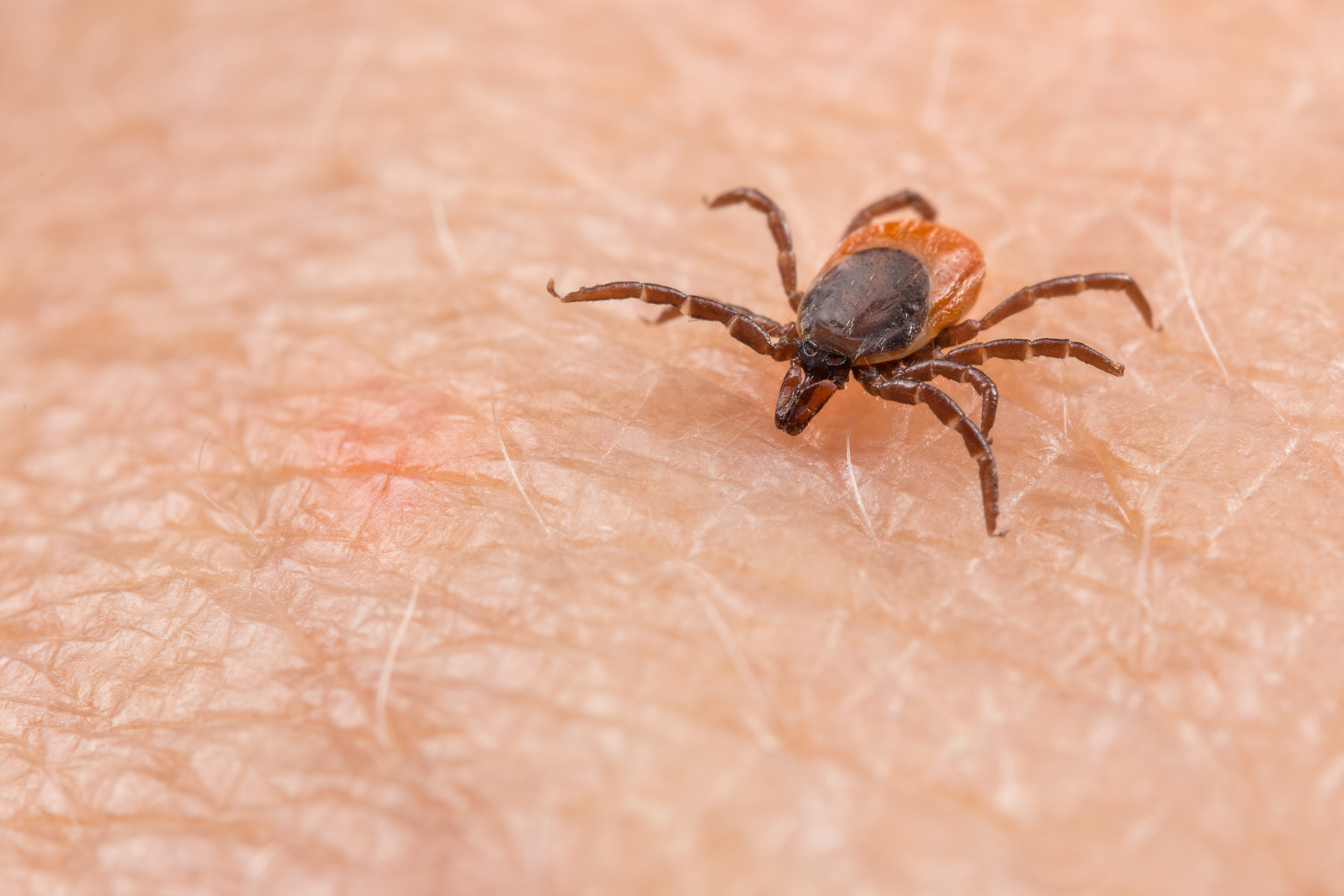
Lyme Disease: Recognizing the Telltale Signs
Lyme disease, caused by the bacterium Borrelia burgdorferi, is one of the most common tick-borne illnesses. Identifying its symptoms early is key to effective treatment.
The Distinctive Lyme Disease Rash
Can you always spot a Lyme disease rash? While not everyone develops a rash, it’s a significant indicator when present. The characteristic rash, known as erythema migrans, typically appears within 3-30 days after the tick bite. It often starts as a small red spot that expands over days, potentially reaching up to 6 inches in diameter.
How does the Lyme disease rash differ on various skin tones? On lighter skin, the rash may appear red or pinkish with a clear border. On darker skin, it might be less visible, presenting as a darker patch or a blue-purple hue. Some people may notice a crusted center within the rash, which can look like a scab on lighter skin or a deeper-colored area on darker skin.
Beyond the Rash: Other Lyme Disease Symptoms
What other symptoms should you watch for? Lyme disease often mimics flu-like symptoms, including:

- Fever
- Chills
- Fatigue
- Body aches
- Headache
- Joint pain
These symptoms, combined with a history of tick exposure or the presence of the characteristic rash, warrant medical attention.
Differentiating Lyme Disease from Other Tick-Borne Illnesses
While Lyme disease is prevalent, it’s not the only concern when it comes to tick bites. Other tick-borne illnesses can present with similar symptoms, making accurate diagnosis crucial.
Rocky Mountain Spotted Fever (RMSF)
How does RMSF differ from Lyme disease? RMSF typically causes a rash 2-5 days after initial symptoms appear. The rash often starts as small, flat, pink spots on the wrists and ankles, spreading to the rest of the body. In about half the cases, these spots turn red or purple after a week.
Is RMSF rash visible on all skin tones? The rash may be more noticeable on lighter skin but can be fainter and easily missed on darker skin tones, highlighting the importance of comprehensive evaluation beyond visual symptoms.
Southern Tick-Associated Rash Illness (STARI)
How does STARI present? STARI produces a rash similar to Lyme disease – a red bull’s-eye with the bite at the center. However, it’s crucial to note that STARI is a distinct condition from Lyme disease, despite the similar rash appearance.

Tularemia and Ehrlichiosis
What distinguishes tularemia and ehrlichiosis? Tularemia often results in a painful open sore at the bite site. Ehrlichiosis, more common in children, can cause a rash varying from small, flat, red or purple spots to red areas covered with small bumps.
Proper Tick Removal and Immediate Care
Discovering a tick on your body requires prompt and careful action. Follow these steps for safe tick removal:
- Use fine-tipped tweezers to grasp the tick as close to the skin’s surface as possible.
- Pull upward with steady, even pressure. Avoid twisting or jerking the tick.
- After removal, clean the bite area and your hands with rubbing alcohol or soap and water.
- Dispose of the tick by submersing it in alcohol, placing it in a sealed bag, or flushing it down the toilet.
Why should you save the tick? Preserving the tick in a sealed container can be helpful for identification by a healthcare professional, potentially aiding in diagnosis if symptoms develop later.
When to Seek Medical Attention
Knowing when to consult a healthcare provider after a tick bite is crucial for preventing complications. Seek medical attention if you experience:
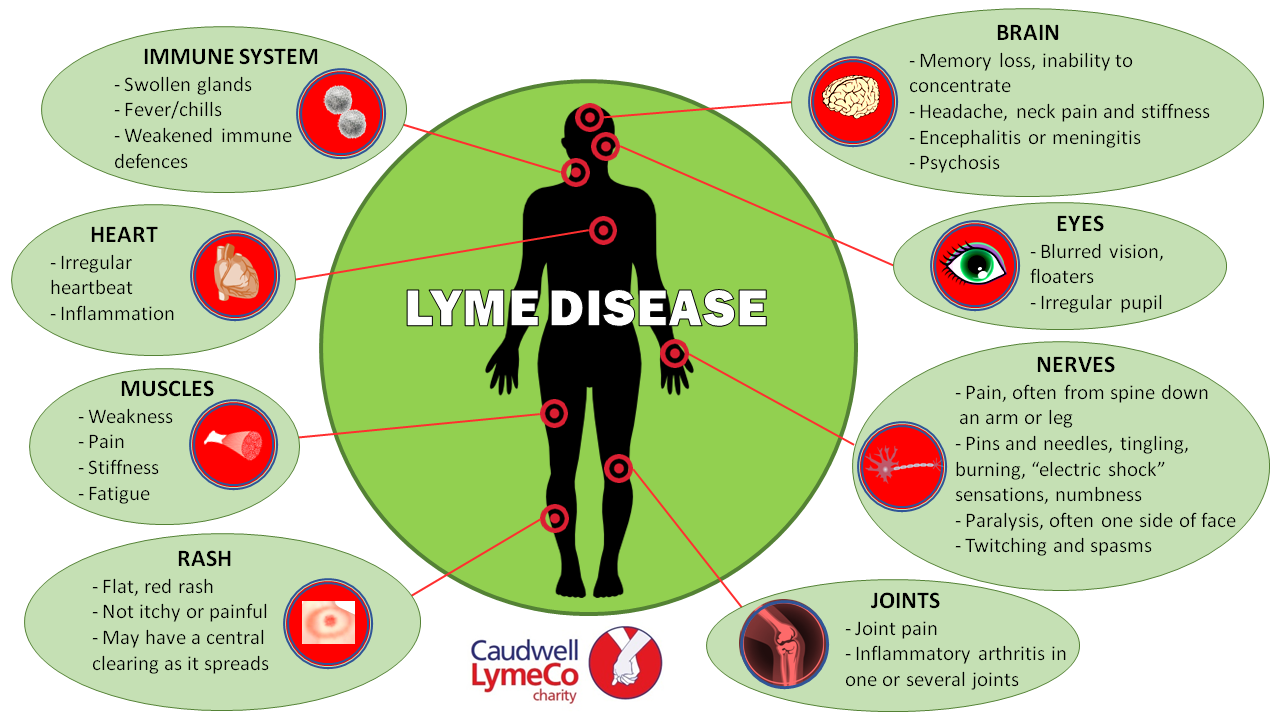
- A rash developing around the bite site, especially if it resembles a bull’s-eye
- Flu-like symptoms such as fever, chills, or body aches
- Joint pain or swelling
- Persistent headache or fatigue
- Any unusual symptoms in the weeks following a tick bite
Early intervention can significantly improve outcomes for tick-borne illnesses, particularly Lyme disease.
Treatment Options for Lyme Disease and Other Tick-Borne Illnesses
The approach to treating tick-borne illnesses varies depending on the specific disease and its stage. For Lyme disease, the primary treatment involves antibiotics.
Antibiotic Therapy
What antibiotics are commonly used for Lyme disease? Doxycycline is often the first-line treatment for adults and children over 8 years old. For younger children or those unable to take doxycycline, alternatives like amoxicillin or cefuroxime may be prescribed.
How long does antibiotic treatment typically last? The duration can vary from 10 to 28 days, depending on the stage of the disease and the patient’s response to treatment.

Managing Symptoms
Beyond antibiotics, symptom management is crucial. This may include:
- Over-the-counter pain relievers for joint pain and headaches
- Rest to combat fatigue
- Anti-inflammatory medications for swelling
- Topical treatments for skin-related symptoms
Long-Term Considerations
Can Lyme disease have long-term effects? Some individuals may experience persistent symptoms even after treatment, a condition known as Post-Treatment Lyme Disease Syndrome (PTLDS). Managing PTLDS often requires a multidisciplinary approach, focusing on symptom relief and improving quality of life.
Preventing Tick Bites and Reducing Lyme Disease Risk
Prevention is key in avoiding tick-borne illnesses. Implement these strategies to reduce your risk:
- Wear long-sleeved shirts and long pants when in tick-prone areas
- Use EPA-registered insect repellents containing DEET, picaridin, or oil of lemon eucalyptus
- Treat clothing and gear with products containing 0.5% permethrin
- Conduct thorough tick checks after spending time outdoors
- Shower within two hours of coming indoors
- Place clothes in a dryer on high heat for 10 minutes to kill any ticks
How can you make your yard less attractive to ticks? Keep your lawn mowed, remove leaf litter, and create a barrier of wood chips or gravel between your lawn and wooded areas to reduce tick habitats near your home.
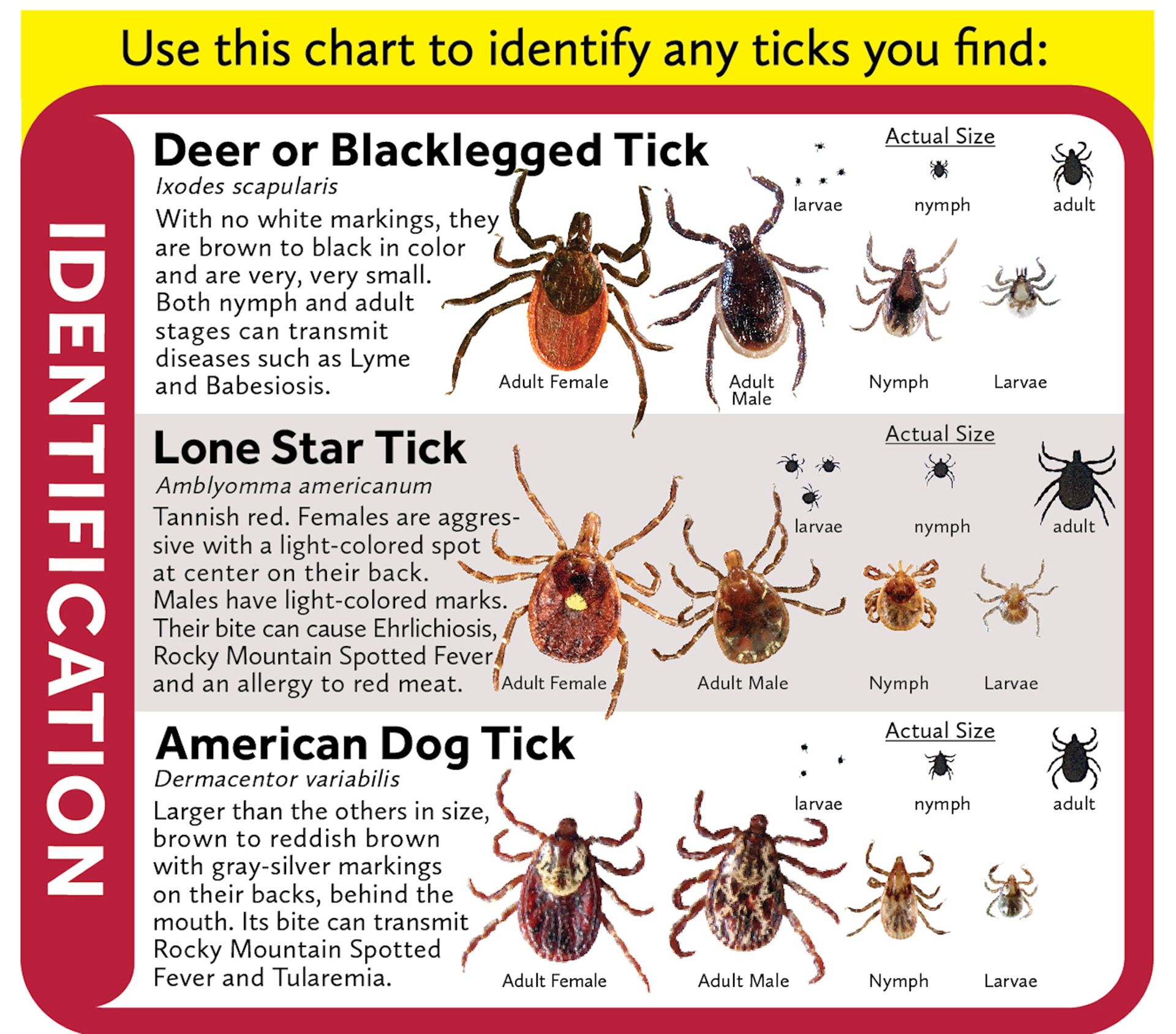
Advancing Research and Future Perspectives in Tick-Borne Illness Management
The field of tick-borne illness research is dynamic, with ongoing studies aimed at improving diagnosis, treatment, and prevention strategies.
Diagnostic Advancements
What new diagnostic tools are being developed? Researchers are working on more accurate and rapid diagnostic tests for Lyme disease and other tick-borne illnesses. These include improved serological tests and molecular diagnostic techniques that can detect the presence of pathogens earlier in the course of infection.
Vaccine Development
Is a Lyme disease vaccine on the horizon? Several vaccine candidates are in various stages of development and clinical trials. While a human vaccine is not yet available, ongoing research shows promise for future prevention strategies.
Ecological Approaches
How are scientists addressing tick populations? Ecological interventions, such as biological control methods and habitat modification, are being explored to reduce tick populations in endemic areas. These approaches aim to disrupt the tick life cycle and minimize human-tick interactions.

The landscape of tick-borne illness management continues to evolve, with interdisciplinary collaboration driving progress in understanding, treating, and preventing these complex diseases. Staying informed about the latest research and recommendations is crucial for both healthcare providers and the public in effectively managing the risk of tick-borne illnesses.
Diseases, Symptoms, Fever, Allergic Reactions, & Flu-Like Symptoms
Written by WebMD Editorial Contributors
- How to Identify Tick Bites
- Tick Bite Symptoms
- How to Treat a Tick Bite
- When Should I Call My Doctor?
- How to Prevent Tick Bites
A lot of bites from little critters looking for their next meal are no big deal. You get a small red bump, maybe it’s itchy, and you move on. But if you have a tick, you want to know about it.
Ticks carry a lot of different diseases, some of them serious. Usually, early treatment is your key to a full and fast recovery. That means you need to know what to look for if a tick bites you.
Ticks aren’t like bugs that bite you and then fly away or scoot off. When one gets on your body, it sets up camp. It finds a place to eat, then burrows its head into your skin and starts feeding. And it will stay there for several days.
Most likely, you won’t feel anything because the bite doesn’t hurt, and it isn’t usually itchy. Because ticks are often very small, you might not see it either. At first, it might just look like a fleck of dirt. As it feeds though, it swells up and can be easier to find.
Because ticks are often very small, you might not see it either. At first, it might just look like a fleck of dirt. As it feeds though, it swells up and can be easier to find.
You might get a small red bump where the tick bites you. Some people’s bodies react to ticks with 1 to 2 inches of redness around the bite. That red area won’t get any bigger, unless it’s really a rash, which is a sign of disease.
Ticks typically bite people in warm, moist, or hairy areas, like the:
- Scalp
- Skin behind the ear
- Armpit
- Groin
- Skin between your fingers and toes
Once a tick finds a place to feed, it will stay there anywhere from a few days to 2 weeks. Ticks bite once and use that site to feed on your blood until they’re full. A tick will fall off on its own once it’s full. You won’t get multiple bites from a tick. Most tick bites are painless and cause only a minor reaction. Only sometimes do they transmit disease.
Tick bites often cause a reaction on your skin, even when they’re not infected or disease-causing. Typical symptoms of a tick bite may include:
Typical symptoms of a tick bite may include:
- A small hard bump or sore
- Redness
- Swelling
Unlike other bites, tick bites don’t usually have fluid or pus in them, unless they’re infected.
Most diseases from ticks also give you flu-like symptoms, such as:
- Body aches
- Chills
- Feeling very tired
- A fever
- A headache
With Lyme disease, you may also have joint pain.
Only some diseases from ticks give you a rash. What it looks like depends on which kind you have.
Lyme disease: Most people with Lyme disease get a rash, but not all of them. It shows up within 3-30 days after you were bitten, but it usually takes just over a week.
You’ll see a round or oval area of redness around the bite. At first, it may look just like a reaction to the bite, but the rash gets bigger over days or even weeks. Typically, it reaches about 6 inches wide. It might feel warm, but it’s not usually painful or itchy.
Most people think of the bull’s-eye rash when they hear about Lyme disease. That happens in less than half the cases, and it comes after the rash has been around for a while.
On lighter skin, the faint color and border of the rash might be more noticeable. But on darker skin, it may be less visible.
You could also notice a crusted center within the rash. If you have darker skin, this may look like a deeper-colored patch of skin. On lighter skin, it may appear as a red scabby area.
Lyme disease rashes can show up in different shapes and colors. Rashes on light skin tend to be redder and bluer, while rashes on dark skin may be a deeper blue or purple. But everyone’s rash will look slightly different.
Rocky Mountain spotted fever: Most people with RMSF get a rash 2-5 days after they first get symptoms. It won’t look the same on everyone, but it usually starts as small, flat, pink spots on your wrists and ankles.
It spreads from there to the rest of your body.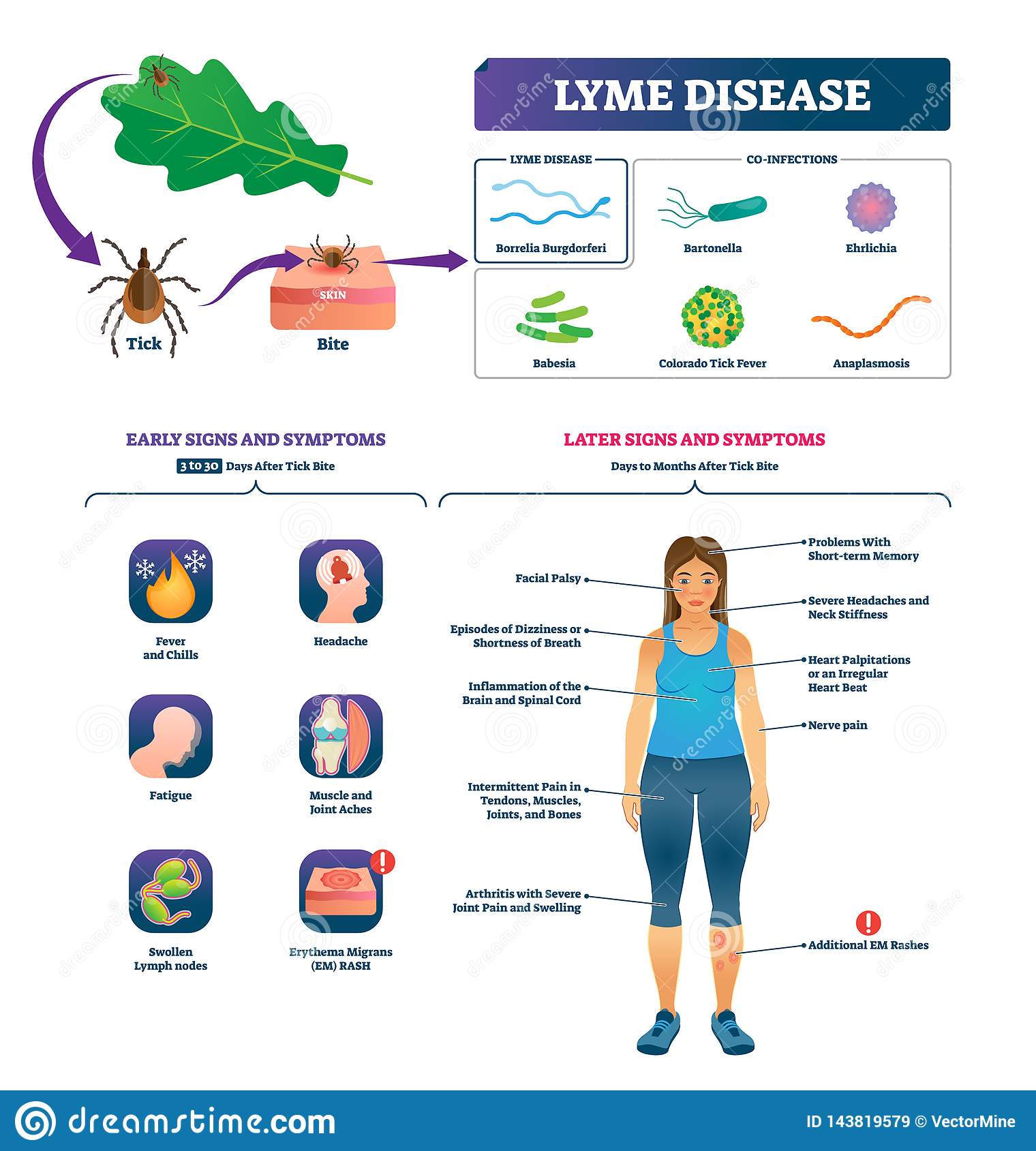 In about half the cases, the spots turn red or purple after about a week.
In about half the cases, the spots turn red or purple after about a week.
While the spots may be more noticeable on lighter skin, they may be fainter on darker skin. This means that Rocky Mountain spotted fever can be easily missed in people with dark skin.
Southern tick-associated rash illness: With STARI, you get a rash just like Lyme disease: a red bull’s-eye with the bite in the center.
Tularemia: There are different types of tularemia, but with the most common one, you get a painful open sore where the tick bit you.
Ehrlichiosis: Children get the rash more often than adults. The rash can vary from small, flat, red, or purple spots to red areas of skin covered with small bumps.
If you find a tick still on your skin, follow these steps:
- Remove it. Don’t touch the tick with your bare hands. Gently pull it straight out with tweezers. Don’t twist or squeeze it. Make sure you’ve removed the whole tick.

- Save it in a sealed container. It helps to have a doctor look at or test your tick so you know if it was carrying diseases.
- Wash your hands and the site of the bite. Once the tick is gone, use soap and water to make sure you’ve cleaned off any of the tick’s saliva.
It’s important to start treatment for diseases from ticks as soon as possible. If your tick bite is infected or you’ve gotten a disease from it, your doctor may prescribe antibiotics to help get rid of the infection or disease.
Call or see your doctor if you:
- Can’t get the tick totally out
- Get a rash (Even if the rash goes away, that doesn’t mean the disease is gone.)
- Have any flu-like symptoms, with or without a rash
- See red streaks, or yellow fluid oozing from the bite, meaning the bite is infected
Some people have more serious reactions to the bite itself. Go to the emergency room if you have:
- Anaphylaxis.
 This is a life-threatening reaction that needs medical care right away.
This is a life-threatening reaction that needs medical care right away. - Tick paralysis. If you have this, you will be unable to move. Paralysis usually goes away within 24 hours of removing the tick.
Call 911 or go to the emergency room if you have any of these symptoms:
- You can’t move your arms, legs, or part of your face.
- It’s hard to breathe.
- Your heart feels like it’s fluttering, skipping beats, or beating too hard or too fast.
- You have a severe headache.
- You feel weakness in your arms or legs.
You can lower your chance of tick bites by preparing yourself before you go outside and knowing what to look for once you’re back inside. Use these tick tips to protect yourself:
- Know where ticks lurk. You’re most likely to come into contact with ticks in long grassy, brush, or in wooded areas. You can even get them from brushing up against an animal that has one.
 Be on the lookout when you camp, garden, hunt, or spend time outdoors.
Be on the lookout when you camp, garden, hunt, or spend time outdoors. - Treat clothes with permethrin. Products with 0.5% permethrin help repel ticks. You put it on your clothes, shoes, and gear, not skin.
- Treat skin with insect repellents. If you know you’ll be in a tick-friendly area, use products with DEET, picaridin, IR3535, oil of lemon eucalyptus (OLE), para-menthane-diol (PMD), or 2-undecanone on your skin to help make sure ticks and other bugs buzz off.
- Hike smart. When you’re outdoors, try to avoid places where you’ll rub against trees, plants, or grass. Walk in the center of trails.
- Do tick checks. Spend time looking for ticks on your body, pets, clothing, and gear after you come in from time outdoors. Use a mirror for hard-to-see areas of your body, and don’t forget to check your scalp.
- Wash off. Taking a shower within 2 hours of being outdoors can reduce your chance of getting a tick-borne disease.
 Running water and scrubbing with soap can help remove ticks from your body. Wash laundry on hot to rid your clothes of any hidden ticks.
Running water and scrubbing with soap can help remove ticks from your body. Wash laundry on hot to rid your clothes of any hidden ticks.
Top Picks
Diseases, Symptoms, Fever, Allergic Reactions, & Flu-Like Symptoms
Written by WebMD Editorial Contributors
- How to Identify Tick Bites
- Tick Bite Symptoms
- How to Treat a Tick Bite
- When Should I Call My Doctor?
- How to Prevent Tick Bites
A lot of bites from little critters looking for their next meal are no big deal. You get a small red bump, maybe it’s itchy, and you move on. But if you have a tick, you want to know about it.
You get a small red bump, maybe it’s itchy, and you move on. But if you have a tick, you want to know about it.
Ticks carry a lot of different diseases, some of them serious. Usually, early treatment is your key to a full and fast recovery. That means you need to know what to look for if a tick bites you.
Ticks aren’t like bugs that bite you and then fly away or scoot off. When one gets on your body, it sets up camp. It finds a place to eat, then burrows its head into your skin and starts feeding. And it will stay there for several days.
Most likely, you won’t feel anything because the bite doesn’t hurt, and it isn’t usually itchy. Because ticks are often very small, you might not see it either. At first, it might just look like a fleck of dirt. As it feeds though, it swells up and can be easier to find.
You might get a small red bump where the tick bites you. Some people’s bodies react to ticks with 1 to 2 inches of redness around the bite. That red area won’t get any bigger, unless it’s really a rash, which is a sign of disease.
Ticks typically bite people in warm, moist, or hairy areas, like the:
- Scalp
- Skin behind the ear
- Armpit
- Groin
- Skin between your fingers and toes
Once a tick finds a place to feed, it will stay there anywhere from a few days to 2 weeks. Ticks bite once and use that site to feed on your blood until they’re full. A tick will fall off on its own once it’s full. You won’t get multiple bites from a tick. Most tick bites are painless and cause only a minor reaction. Only sometimes do they transmit disease.
Tick bites often cause a reaction on your skin, even when they’re not infected or disease-causing. Typical symptoms of a tick bite may include:
- A small hard bump or sore
- Redness
- Swelling
Unlike other bites, tick bites don’t usually have fluid or pus in them, unless they’re infected.
Most diseases from ticks also give you flu-like symptoms, such as:
- Body aches
- Chills
- Feeling very tired
- A fever
- A headache
With Lyme disease, you may also have joint pain.
Only some diseases from ticks give you a rash. What it looks like depends on which kind you have.
Lyme disease: Most people with Lyme disease get a rash, but not all of them. It shows up within 3-30 days after you were bitten, but it usually takes just over a week.
You’ll see a round or oval area of redness around the bite. At first, it may look just like a reaction to the bite, but the rash gets bigger over days or even weeks. Typically, it reaches about 6 inches wide. It might feel warm, but it’s not usually painful or itchy.
Most people think of the bull’s-eye rash when they hear about Lyme disease. That happens in less than half the cases, and it comes after the rash has been around for a while.
On lighter skin, the faint color and border of the rash might be more noticeable. But on darker skin, it may be less visible.
You could also notice a crusted center within the rash. If you have darker skin, this may look like a deeper-colored patch of skin. On lighter skin, it may appear as a red scabby area.
On lighter skin, it may appear as a red scabby area.
Lyme disease rashes can show up in different shapes and colors. Rashes on light skin tend to be redder and bluer, while rashes on dark skin may be a deeper blue or purple. But everyone’s rash will look slightly different.
Rocky Mountain spotted fever: Most people with RMSF get a rash 2-5 days after they first get symptoms. It won’t look the same on everyone, but it usually starts as small, flat, pink spots on your wrists and ankles.
It spreads from there to the rest of your body. In about half the cases, the spots turn red or purple after about a week.
While the spots may be more noticeable on lighter skin, they may be fainter on darker skin. This means that Rocky Mountain spotted fever can be easily missed in people with dark skin.
Southern tick-associated rash illness: With STARI, you get a rash just like Lyme disease: a red bull’s-eye with the bite in the center.
Tularemia: There are different types of tularemia, but with the most common one, you get a painful open sore where the tick bit you.
Ehrlichiosis: Children get the rash more often than adults. The rash can vary from small, flat, red, or purple spots to red areas of skin covered with small bumps.
If you find a tick still on your skin, follow these steps:
- Remove it. Don’t touch the tick with your bare hands. Gently pull it straight out with tweezers. Don’t twist or squeeze it. Make sure you’ve removed the whole tick.
- Save it in a sealed container. It helps to have a doctor look at or test your tick so you know if it was carrying diseases.
- Wash your hands and the site of the bite. Once the tick is gone, use soap and water to make sure you’ve cleaned off any of the tick’s saliva.
It’s important to start treatment for diseases from ticks as soon as possible. If your tick bite is infected or you’ve gotten a disease from it, your doctor may prescribe antibiotics to help get rid of the infection or disease.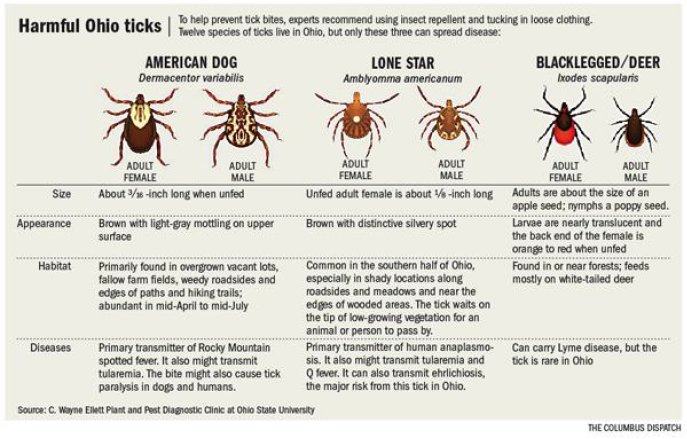
Call or see your doctor if you:
- Can’t get the tick totally out
- Get a rash (Even if the rash goes away, that doesn’t mean the disease is gone.)
- Have any flu-like symptoms, with or without a rash
- See red streaks, or yellow fluid oozing from the bite, meaning the bite is infected
Some people have more serious reactions to the bite itself. Go to the emergency room if you have:
- Anaphylaxis. This is a life-threatening reaction that needs medical care right away.
- Tick paralysis. If you have this, you will be unable to move. Paralysis usually goes away within 24 hours of removing the tick.
Call 911 or go to the emergency room if you have any of these symptoms:
- You can’t move your arms, legs, or part of your face.
- It’s hard to breathe.
- Your heart feels like it’s fluttering, skipping beats, or beating too hard or too fast.

- You have a severe headache.
- You feel weakness in your arms or legs.
You can lower your chance of tick bites by preparing yourself before you go outside and knowing what to look for once you’re back inside. Use these tick tips to protect yourself:
- Know where ticks lurk. You’re most likely to come into contact with ticks in long grassy, brush, or in wooded areas. You can even get them from brushing up against an animal that has one. Be on the lookout when you camp, garden, hunt, or spend time outdoors.
- Treat clothes with permethrin. Products with 0.5% permethrin help repel ticks. You put it on your clothes, shoes, and gear, not skin.
- Treat skin with insect repellents. If you know you’ll be in a tick-friendly area, use products with DEET, picaridin, IR3535, oil of lemon eucalyptus (OLE), para-menthane-diol (PMD), or 2-undecanone on your skin to help make sure ticks and other bugs buzz off.

- Hike smart. When you’re outdoors, try to avoid places where you’ll rub against trees, plants, or grass. Walk in the center of trails.
- Do tick checks. Spend time looking for ticks on your body, pets, clothing, and gear after you come in from time outdoors. Use a mirror for hard-to-see areas of your body, and don’t forget to check your scalp.
- Wash off. Taking a shower within 2 hours of being outdoors can reduce your chance of getting a tick-borne disease. Running water and scrubbing with soap can help remove ticks from your body. Wash laundry on hot to rid your clothes of any hidden ticks.
Top Picks
signs, first aid, consequences, prevention
Bees can be found wherever something blooms: in meadows, fields, forests, squares and parks. And summer residents are trying to attract bees to their site, because they pollinate vegetables, fruit trees and berry bushes. Bees are certainly useful, bee products are healing, and even bee venom is used in medicine.
And summer residents are trying to attract bees to their site, because they pollinate vegetables, fruit trees and berry bushes. Bees are certainly useful, bee products are healing, and even bee venom is used in medicine.
However, bee stings are a problem. At the very least, it’s painful and uncomfortable. But for some people, they can be deadly.
Signs of a bee sting
Usually three of them:
- sharp burning pain;
- reddening of the skin with a white dot in the center is the site of the bite;
- rapid edema.
For the vast majority of people, this is the limit. However, some victims may experience an allergic reaction. And then others will be added to the main symptoms:
- severe, rapidly progressive swelling in the bite area;
- severe itching and rash all over the body;
- nausea and vomiting;
- Difficulty breathing, similar to an asthma attack.

First aid for a bee sting
The sting of the bee has notches, if the insect inserts it into the skin, it can no longer get it back – it comes off. After that, the bee dies, and in most cases the sting remains at the site of the bite, and along with the sac in which the poison is located. And he continues to enter the body. Therefore, the first step is to pull out the sting.
Further actions are as follows:
- wash the sting with soap and running water to remove any remaining venom from the skin;
- apply ice to the bite site – it will reduce pain and partially relieve swelling;
- lubricate the bite with any soothing ointment, if it is at hand, for example, hydrocortisone – this will relieve swelling and itching;
- drink more water – so the poison will be removed from the body faster;
- if there are signs of an allergic reaction, take an antihistamine – Kraritin, Diphenhydramine;
- If the allergic reaction develops rapidly and there is a threat to life, immediately call an ambulance or consult a doctor.

Consequences of a bee sting
In most people, swelling after a bee sting subsides after 2-3 hours – the main thing here is not to comb the sting. However, in some people (about 1% of those affected), bee stings lead to serious consequences.
– Bee stings are very allergenic, often causing anaphylactic reactions, says allergist-immunologist Elena Timoshina .
Anaphylaxis is a severe allergic reaction that threatens the patient’s life. Its symptoms are as follows:
- severe swelling of the neck and larynx;
- breathing is disturbed – it becomes more frequent, it becomes difficult to breathe, wheezing appears;
- pressure drops sharply, pulse becomes thready;
- dizziness appears;
- people lose consciousness.
Bee stings in the face area are especially dangerous – even in a person who calmly tolerates bee venom, his eyes are swollen, and the swelling does not subside for a long time.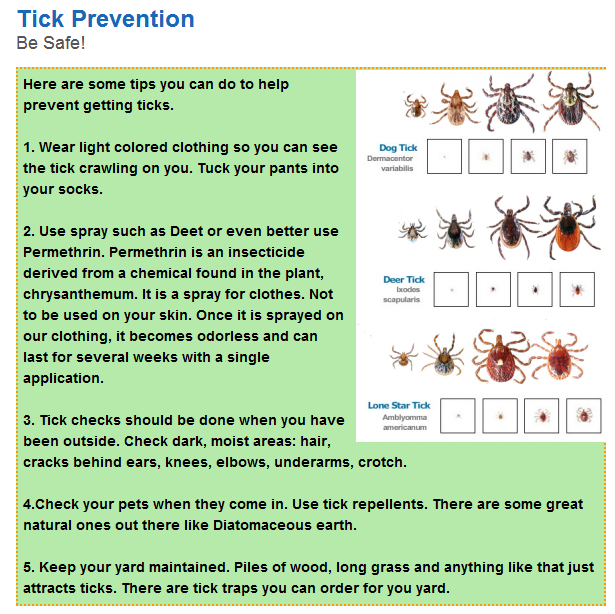 Even worse is a bite in the tongue – it can swell up and block breathing. In such cases, you need to call doctors.
Even worse is a bite in the tongue – it can swell up and block breathing. In such cases, you need to call doctors.
Elena Timoshina Allergist-immunologist
Multiple bee stings can also be dangerous, for example, if you find yourself in an apiary or stumble upon a swarm.
Prevention of bee sting
Bees do not react at all to red color – they do not see it, therefore, when going out of town, wear just such clothes. But try to avoid yellow and blue – the bees distinguish them well and can decide that you are a flower. Pay attention – in the fields, most of the flowers are just yellow and blue – this is how they attract pollinators.
If you are having a picnic in nature, inspect food and drinks carefully before putting them in your mouth. A bee looking for water can easily end up in your glass. And if there are sweets on the table, and especially honey, be sure that the bees will also gather for the meal.
The best prevention against a bee sting in nature is to look around and not wave your arms if the insect is nearby.


 This is a life-threatening reaction that needs medical care right away.
This is a life-threatening reaction that needs medical care right away. Be on the lookout when you camp, garden, hunt, or spend time outdoors.
Be on the lookout when you camp, garden, hunt, or spend time outdoors. Running water and scrubbing with soap can help remove ticks from your body. Wash laundry on hot to rid your clothes of any hidden ticks.
Running water and scrubbing with soap can help remove ticks from your body. Wash laundry on hot to rid your clothes of any hidden ticks.


